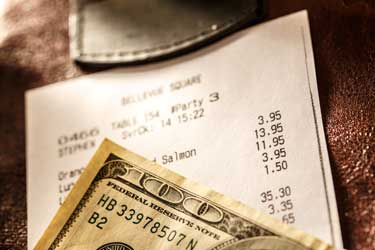
Food For Thought: New Menus Pay for Themselves
To stay in step with rising food costs, restaurant owners must keep on top of the numbers and update their establishment’s pricing. And, yes, reprinting the menu does cost money – but NOT doing so costs restaurant businesses far more.
When it comes to updating menus, many restaurant owners often hesitate, or worse still, do nothing at all. They will coast along and update their menus every few years, thinking this spares them the expense of new ones, without reflecting their actual food cost increases in the gap that transpires. When they finally do redo their menu, it often includes significant increases based on food costs that have mounted up over the extended period of time. This results in big price bumps that their customers most certainly notice. These larger increases can really backfire, especially if a restaurant’s competitors have been incrementally -- and less noticeably -- raising their prices all along.
What Your Restaurant Could Be Missing Out On
The bottom line (literally) is that your food costs are going to go up regardless. And, when your restaurant doesn’t raise its menu prices, you stand to lose a lot of money. Even a small increase just once a year will help keep up with rising food costs, gain revenue, and be less inclined to upset your customer base. John Marsh, a business development representative at MenuWorks notes, “One restaurant we work with grew their revenue by $1 million annually with just a 50¢ per check increase.” You may not deal in similar volume but this reveals that even small increases pay off. These smaller amounts are also more palatable to your customer base – instead of alarming them with much larger increases in 2 or 3 years, all while you’re losing cash by not covering your food costs over that lengthy expanse of time.
“Some of MenuWorks’ restaurant clients update their menus every 6 to 8 months,” according to Marsh, who adds, “they understand the benefit.” Recognizing that all restaurants, especially smaller ones and non-chain establishments may not be inclined to make as many updates, Marsh recommends planning for this at least once a year to balance out rising food costs and avoid lost proceeds.
Ultimately, the new menus pay for themselves with the increased revenue. Another thing to keep in mind is that menus start looking old after a couple of years so regularly planning for updates makes them more appealing to customers. This also allows you to update the look of the menu as well as your offerings on a more regular basis to further capture your guests’ interest. Even if you’re not ready to commit to new menus twice a year, doing so every 12 to 18 months definitely makes dollars and sense!
New Page Options Offer Flexibility
With an array of versatile menu fabrications available, there is no reason to get “crafty” yourself. Nothing calls out price increases like crossed out numbers or stickers on a menu. (Plus, this also mars that great looking menu you worked so hard to create in the first place.) Pop-in-pages pages designed to pop in and out of coil bound menus and hybrid sleeves where you can update and swap out printed sheets make keeping up with pricing a breeze and also allows you to add new items and seasonal specials.
If your restaurant is looking to update its menus with durable, attractive options, contact one of MenuWorks’ experienced account managers for more ideas and to receive a sample pack of menus in various styles and sizes for reference and inspiration. MenuWorks also offers expert design services for convenient one-stop shopping, so be sure to ask for samples designed by our talented in-house team as well.
